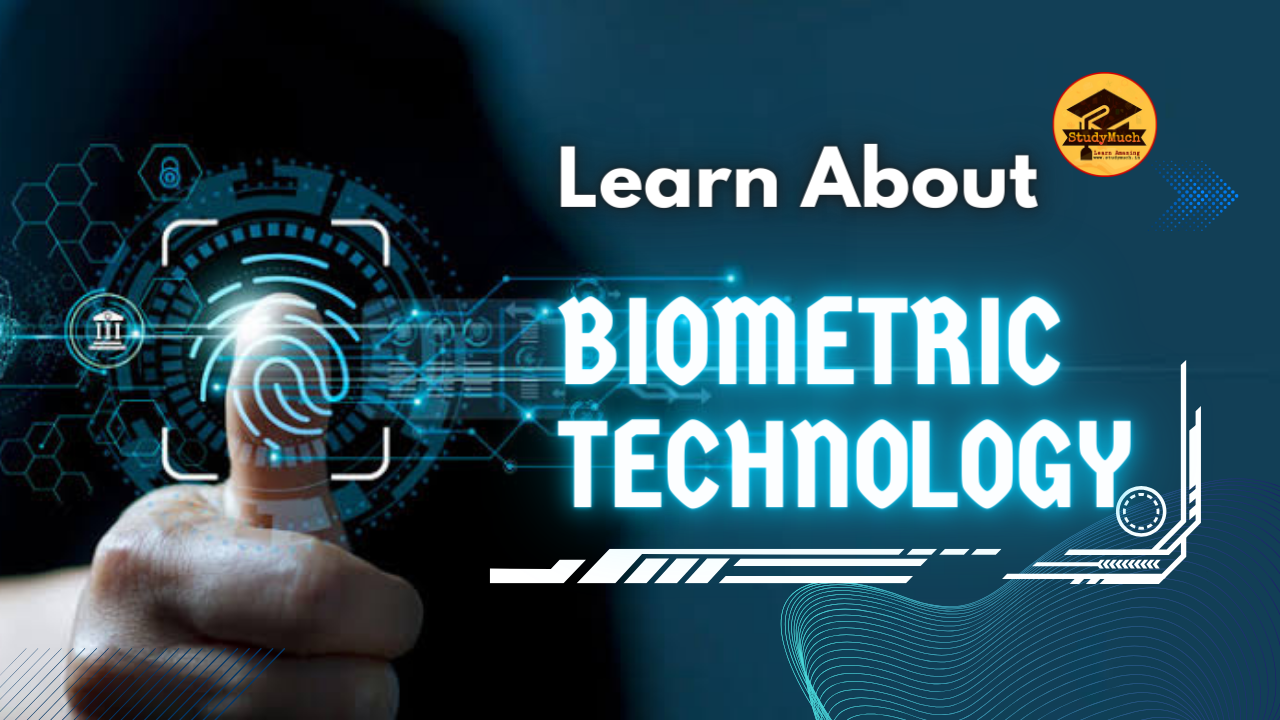Biometric Technology

Biometric Technology: Advancements in Secure Identification
In the ever-evolving landscape of technology, biometric authentication has emerged as an important and transformative component of secure identity. Biometrics takes advantage of the unique physical and behavioral characteristics of individuals to provide access to or verify identity. It has rapidly gained prominence in a variety of sectors, from personal devices and government applications to financial services and healthcare. This blog post delves into the fascinating world of biometric technology, highlighting its advances, applications, and implications for security and privacy.
Understanding Biometric Technology
Biometric technology relies on biological and behavioral characteristics to establish identity. These characteristics are distinctive to each individual and typically fall into two categories:
1. Physiological Biometrics
- Fingerprint Recognition: Perhaps the most recognizable form of biometric authentication, fingerprint scanning has become ubiquitous on smartphones and other devices. It relies on the unique ridges and whorls of an individual’s fingertip.
- Iris and Retina Scanning: Iris and retina scans use patterns in the eye to create a unique identifier. These technologies are often used in high-security environments.
- Face Recognition: Facial recognition technology analyzes facial features, such as the distance between the eyes and the shape of the nose and mouth, to verify identity.
- DNA Matching: While not as commonly used due to its complexity, DNA matching is one of the most accurate forms of biometric identification.
2. Behavioral Biometrics
- Voice Recognition: Each person’s voice has unique characteristics, such as pitch, tone, and cadence. Voice recognition is used in phone systems and voice assistants.
- Keystroke Dynamics: The way an individual types on a keyboard or touchscreen is unique. Keystroke dynamics are often used for online authentication.
- Gait Analysis: The way a person walks, known as gait, can also be used for identification purposes.

Advancements in Biometric Technology
Recent advancements in biometrics have been nothing short of groundbreaking. These developments have significantly improved accuracy, security, and user experience.
1. Deep Learning and Artificial Intelligence
The advent of deep learning and artificial intelligence (AI) has revolutionized biometric technology. Machine learning algorithms can now analyze vast datasets to recognize patterns and identify individuals more accurately. This has led to substantial improvements in facial recognition and voice recognition systems.
2. Multi-Modal Biometrics
To enhance security, many systems now use multi-modal biometrics, combining two or more biometric identifiers. For instance, a system may require both fingerprint and facial scans to verify identity, making it more difficult for impostors to gain access.
3. Liveness Detection
Liveness detection has become a crucial feature in biometric systems. It prevents attackers from using photos or recordings to fool facial recognition systems. By assessing the liveliness of facial features, these systems can ensure that a real person is being authenticated.
4. Contactless Biometrics
The COVID-19 pandemic accelerated the adoption of contactless biometrics. Systems that use facial recognition or iris scanning are particularly valuable in situations where physical contact should be minimized.
Applications of Biometric Technology
The applications of biometric technology are diverse and continually expanding:
1. Mobile Devices
Smartphones and tablets now commonly feature fingerprint and facial recognition for unlocking and securing access to apps and data.
2. Border Control and Immigration
Biometric technology is used at border crossings to verify travelers’ identities, enhance security, and expedite the immigration process.
3. Financial Services
Banks and financial institutions employ biometric authentication for securing online transactions, accessing accounts, and even authorizing large financial transfers.
4. Healthcare
Biometrics is used to secure patient records, control access to restricted areas within healthcare facilities, and verify the identities of medical professionals.
5. Law Enforcement
Law enforcement agencies utilize biometrics to identify suspects, analyze crime scene evidence, and maintain criminal databases.
6. Time and Attendance Tracking
Businesses use biometric technology to track employee attendance and ensure accurate timekeeping.

Security and Privacy Considerations
While biometric technology offers numerous advantages, it also raises important security and privacy concerns:
1. Data Protection
Biometric data must be stored securely to prevent unauthorized access. Robust encryption and protection mechanisms are essential to safeguard this sensitive information.
2. Privacy Regulations
Many countries have enacted privacy laws to regulate the collection and use of biometric data. Compliance with these laws is crucial for organizations implementing biometric systems.
3. Vulnerabilities
No biometric system is entirely foolproof. Attackers can attempt to spoof or trick biometric sensors, emphasizing the need for continuous improvement and vigilance.
4. Ethical Considerations
The ethical use of biometrics, particularly in surveillance and law enforcement, is a topic of ongoing debate. Striking a balance between security and civil liberties is a significant challenge.
The Future of Biometric Technology
As technology advances, biometric systems are likely to become even more accurate, convenient, and secure. Future developments may include biometric implants, advanced AI-driven systems, and improved anti-spoofing measures.
Biometric technology is poised to play a central role in the digital transformation of various industries, enhancing security and streamlining user experiences. However, the responsible and ethical use of this technology is essential to ensure that privacy rights are respected, and vulnerabilities are mitigated.
In conclusion, biometric technology’s evolution is reshaping how we verify identity and access secure systems. From fingerprint recognition to advanced AI-driven solutions, biometrics offer a promising path toward more secure and convenient authentication methods. However, the responsible and ethical use of this technology is crucial to address the associated security and privacy challenges.
Learn More;


1 Comment
tlover tonet · May 6, 2024 at 6:22 am
I genuinely enjoy studying on this web site, it holds wonderful content. “Beware lest in your anxiety to avoid war you obtain a master.” by Demosthenes.